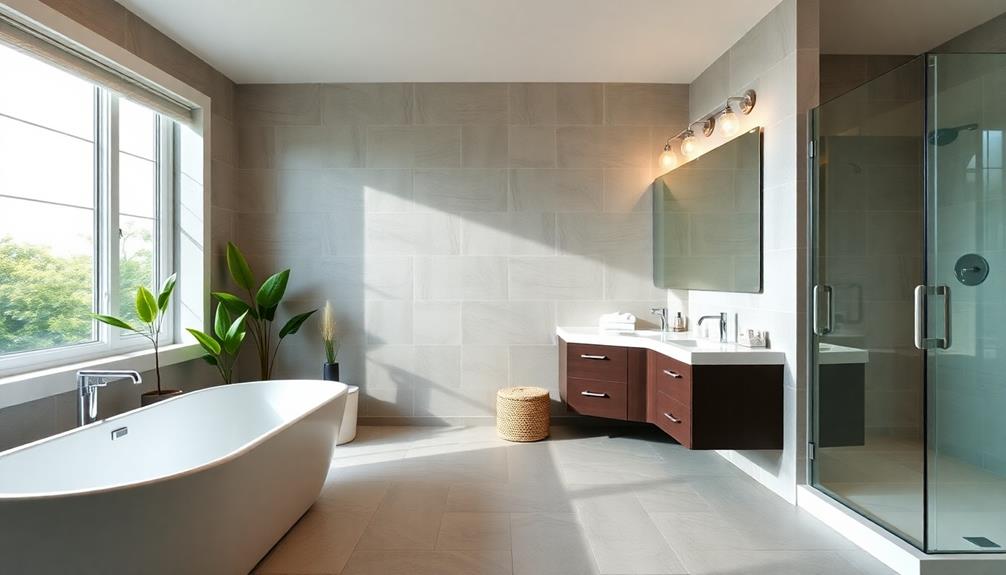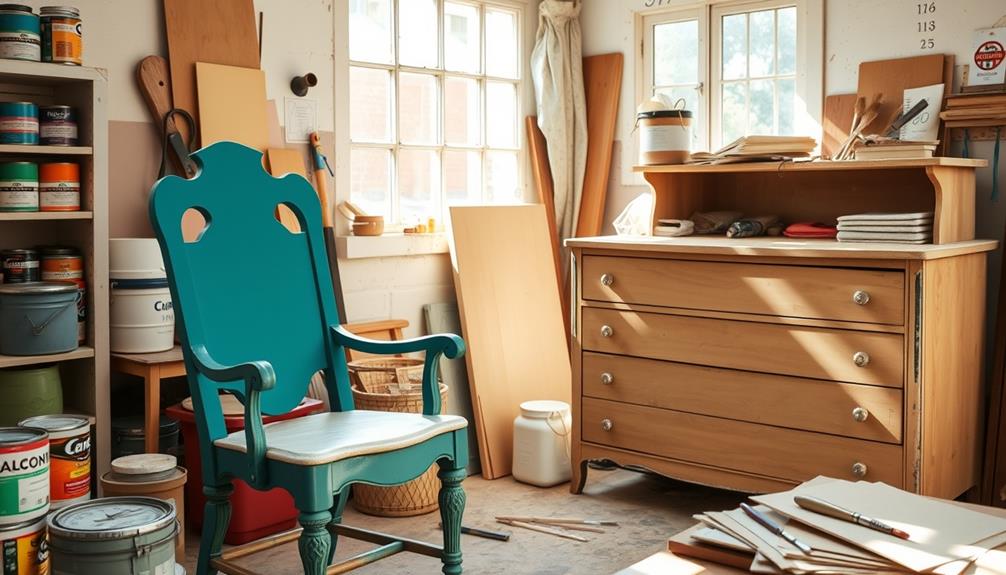You have the opportunity to access a variety of programs and resources that can help you get your bathroom remodeled at no cost. Be sure to look into local government assistance programs that offer low-interest loans or grants, especially if you are a low-income family, senior citizen, or veteran. Organizations like Rebuilding Together provide free repairs to individuals in need. Additionally, you should explore energy efficiency incentives that could potentially offset some of your remodeling expenses. Don’t overlook community support options, such as volunteer programs that provide skilled labor. By approaching the situation correctly, you can make significant enhancements without having to spend any money. There are further details available to assist you in maximizing these opportunities. To take advantage of these programs, it is crucial to become familiar with the permit application process in your area, as many programs require compliance with local building codes. Furthermore, consider reaching out to local non-profit organizations or foundations that may offer assistance with the remodeling process. Through exploring all of the available resources and understanding the necessary steps, you can achieve a cost-efficient and successful bathroom renovation.
Key Takeaways
- Explore local non-profit organizations like Rebuilding Together that provide free home improvement assistance for low-income individuals.
- Research government grant programs aimed at financial support for home repairs, especially for seniors and low-income families.
- Reach out to community volunteer programs where skilled tradespeople may offer their services for free or at a reduced cost.
- Investigate faith-based initiatives run by churches that may offer free or low-cost home improvement services in your area.
- Check if your bathroom modifications qualify as medical expenses for potential tax deductions through the IRS.
Government Assistance Programs
Are you aware that various government assistance programs can help you finance your bathroom remodel? These programs target low-income families, seniors, and individuals with disabilities, making it easier for you to create a safe and accessible bathroom.
It's also worth noting that ensuring your home is safe and accessible can greatly enhance the quality of life for elderly residents, especially when considering financial considerations for elderly care. You might qualify for specific loans or grants, but eligibility often hinges on income limits, home ownership status, and project requirements.
For instance, the USDA offers Rural Housing Repair Loans and Grants specifically designed for low-income seniors. You can use these funds for critical home improvements, including bathroom renovations.
Additionally, many states have Home Improvement Programs (HIPs) that provide low-interest loans or grants for necessary renovations.
Local government housing agencies are valuable resources in this process. They can guide you through the application steps, helping you gather the necessary documentation of your income and property details.
By tapping into these government programs, you can ease the financial burden of a bathroom remodel while ensuring your home meets safety and accessibility standards.
Don't let financial constraints hold you back—explore these options and take the first step toward a remodeled bathroom that suits your needs.
Financial Aid for Home Modifications
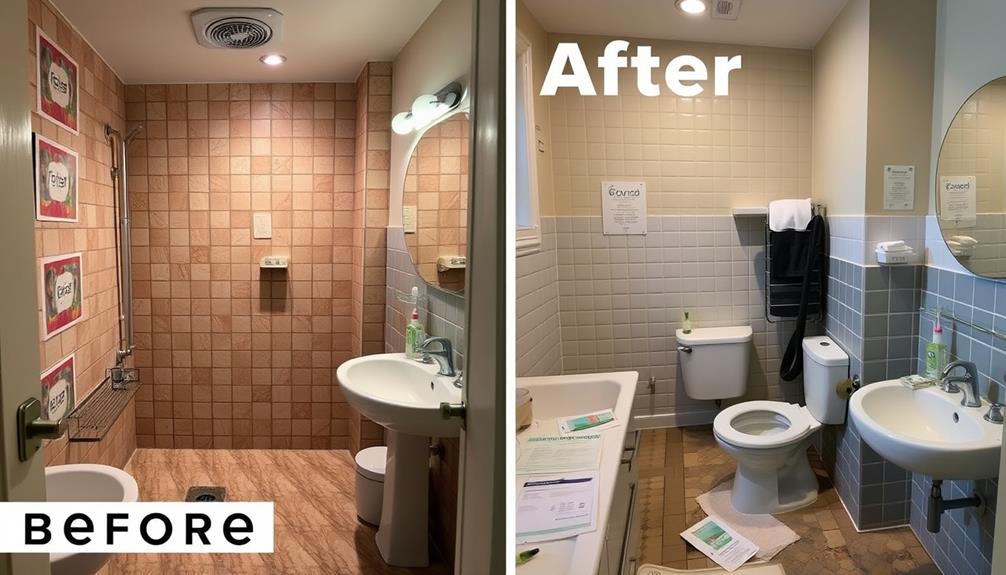
Wondering how you can afford the home modifications you need? You're not alone, and there are several options for financial aid for home modifications that can help.
If you're a veteran, look into the HISA grant, which offers up to $6,800 for necessary renovations related to service-connected conditions. For those who may be experiencing health issues, it's important to reflect on how your home environment can affect your well-being, such as ensuring accessibility and comfort common types of cold medications.
Seniors with low income may qualify for USDA's Rural Housing Repair Loans, specifically designed for home repairs and modifications. If you prefer to age in place, check if you're eligible for Medicaid's Home and Community-Based Services waivers, which can cover essential modifications, though eligibility can vary by state.
Another great option is the non-profit organization Rebuilding Together, which assists low-income individuals with home improvements at no cost. They can provide valuable support for the renovations you need.
Lastly, if you have long-term care insurance, review your policy. Many include coverage for home modifications, allowing you to stay safely and comfortably in your home.
Energy Efficiency Incentives
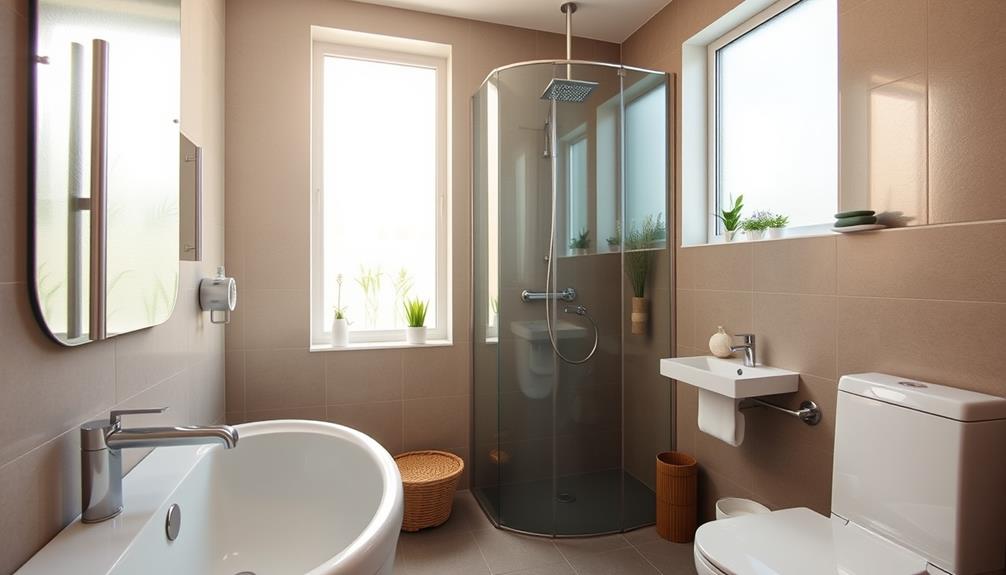
When you're planning your bathroom remodel, don't overlook energy efficiency incentives that can save you money.
These incentives can greatly enhance your financial planning, especially if you're aware of common financial terms related to energy-efficient upgrades.
You can explore available rebates and tax credits that encourage eco-friendly upgrades, like low-flow toilets and Energy Star appliances.
Understanding the application process can help you maximize these benefits and enjoy long-term savings on your utility bills.
Available Energy Incentives
Many homeowners may not realize that there are various energy incentives available to help offset the costs of a bathroom remodel. Local utility companies and state energy offices often provide rebates for energy-efficient upgrades, like improved insulation and water-saving fixtures.
Additionally, some financial services offer investment options that can help fund such upgrades, making it easier for homeowners to manage their renovation budgets—consider exploring precious metal investment options to diversify your financial strategy. By installing Energy Star appliances during your remodel, you might qualify for financial incentives that can considerably lower your renovation expenses.
To find specific programs in your area that offer cash back for energy-efficient home improvements, use the Energy Star rebate finder. This tool helps you identify available energy incentives tailored to your location.
Additionally, some energy efficiency programs focus on assisting low-income households with free or subsidized upgrades, making it easier for those in need to enhance their home's energy performance.
Don't forget about federal tax credits, which may also be available for certain energy-efficient improvements made during your bathroom renovation. These credits can drastically reduce your financial burden, making it more affordable to create the bathroom of your dreams while being environmentally conscious.
Application Process Overview
Starting the application process for energy efficiency incentives can feel intimidating, but breaking it down into manageable steps makes it easier.
First, research available programs through your local government or utility companies that offer financial assistance for home improvement. Look for specific guidelines regarding the types of upgrades that qualify, like energy-efficient lighting or fixtures, as well as regulatory compliance that may relate to your project.
Next, you'll need to prepare documentation of your household income and property details to determine your eligibility for these incentives. Some programs may require you to complete an energy audit to assess your current energy use and identify potential areas for improvement in your bathroom.
Once you've gathered the necessary documents, submit your application.
After submission, keep track of processing times and follow up with the relevant agencies. This guarantees timely approval and funding for your proposed upgrades.
Long-Term Cost Savings
Energy-efficient upgrades not only enhance your bathroom's functionality but also lead to significant long-term cost savings. By installing low-flow fixtures and energy-efficient lighting, you can dramatically reduce both your water and electricity bills. This means that your bathroom remodeling project can pay off in more ways than one.
Additionally, focusing on content relevance and authority in your remodeling decisions guarantees that you're making informed choices that benefit both your home and the environment.
Many local utility companies recognize the benefits of energy efficiency and offer rebates and incentives to homeowners who make these improvements. These financial incentives can help offset your remodeling costs, making it easier to invest in quality upgrades.
Additionally, the Energy Star program provides a handy rebate finder tool, helping you locate available local incentives for energy-efficient appliances and fixtures.
According to the U.S. Department of Energy, upgrading to Energy Star-rated products can save you up to 30% on energy costs annually.
It's also worth exploring weatherization assistance programs that may offer free or low-cost services to improve your home's energy efficiency. By taking advantage of these programs, you guarantee that your bathroom remodeling not only beautifies your space but also contributes to long-term savings on utility expenses.
Veteran Remodeling Resources
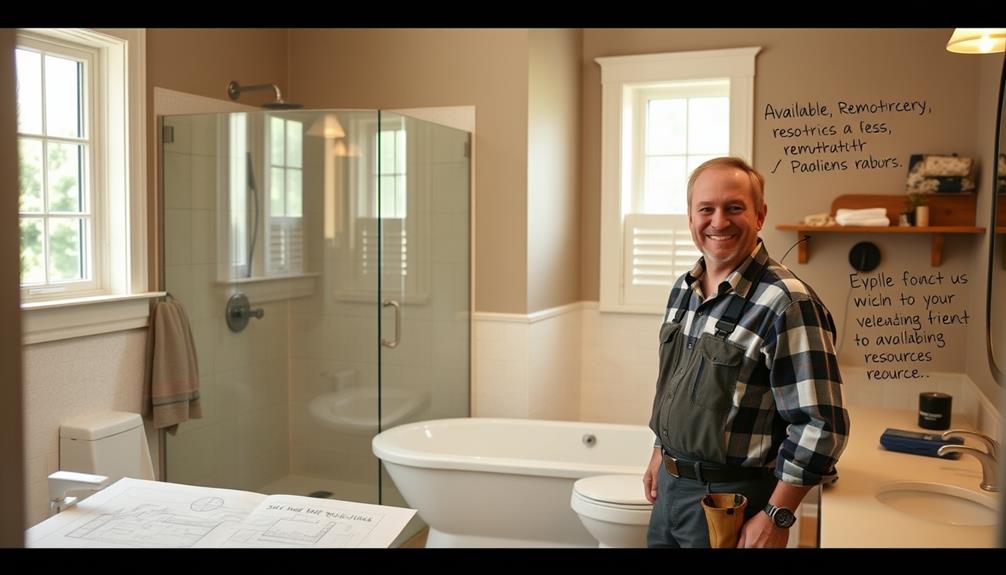
Veterans seeking to remodel their bathrooms can tap into several valuable resources designed to ease financial burdens. Programs such as the Home Improvements and Structural Alterations (HISA) grant provide up to $6,800 for necessary home modifications related to service-connected disabilities. For those with certain permanent and total service-connected disabilities, the Specially Adapted Housing (SAH) grant offers support to build or modify a home to meet their needs. Meanwhile, the Special Housing Adaptation (SHA) grant allows veterans to adapt or purchase a home with a maximum benefit of $20,215.
Additionally, organizations like Rebuilding Together provide free home repair assistance, including bathroom renovations, to low-income veterans. To take advantage of these veteran remodeling resources, you typically need to prove your military service and provide documentation of your disability or need for modification.
Here's a quick overview of these resources:
| Grant/Program | Maximum Benefit | Eligibility Criteria |
|---|---|---|
| HISA Grant | $6,800 | Service-connected disabilities |
| SAH Grant | Varies | Permanent and total disabilities |
| SHA Grant | $20,215 | Service-connected disabilities |
Cost-Saving Strategies
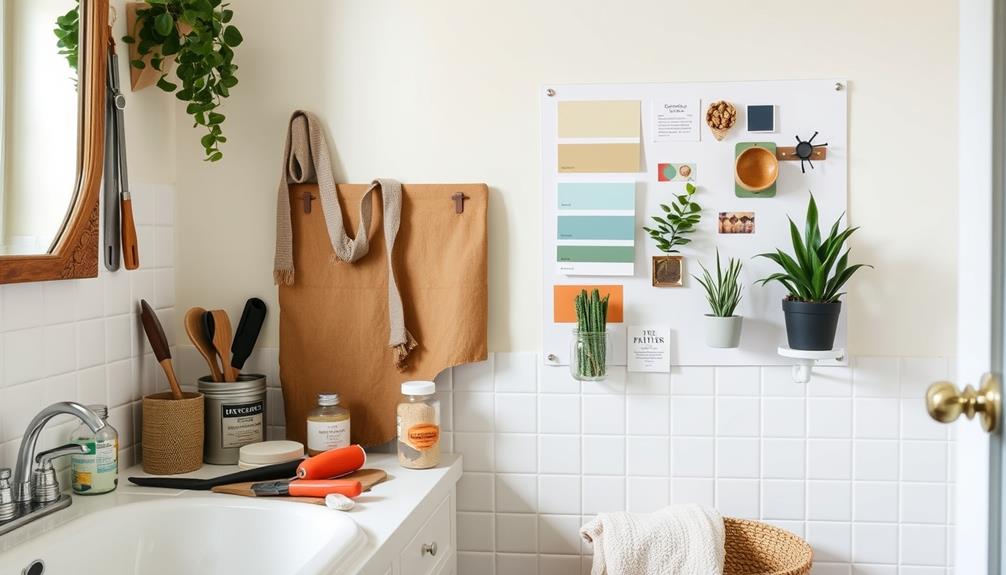
When it comes to remodeling your bathroom on a budget, several cost-saving strategies can make a notable difference. Start by exploring local government home repair assistance programs that may offer grants or low-interest loans based on your income eligibility. This can help cover some of the costs associated with your bathroom's makeover.
Additionally, understanding the financial implications of divorce may help you navigate any potential financial constraints when planning your remodel.
You should also investigate tax deductions for home modifications classified as medical expenses by the IRS. This could offset the costs for necessary renovations, making your updates more affordable.
Additionally, reach out to non-profit organizations like Rebuilding Together, which provides free home improvements for low-income individuals, including bathroom upgrades.
Don't forget to utilize community resources and local charities that might offer financial assistance or materials for your home improvements. This could notably reduce your overall expenses.
Finally, consider DIY options for minor updates, like painting or replacing fixtures. Not only will this cut down on labor costs, but it will also enhance your bathroom's functionality and aesthetics without breaking the bank.
Community Support Opportunities
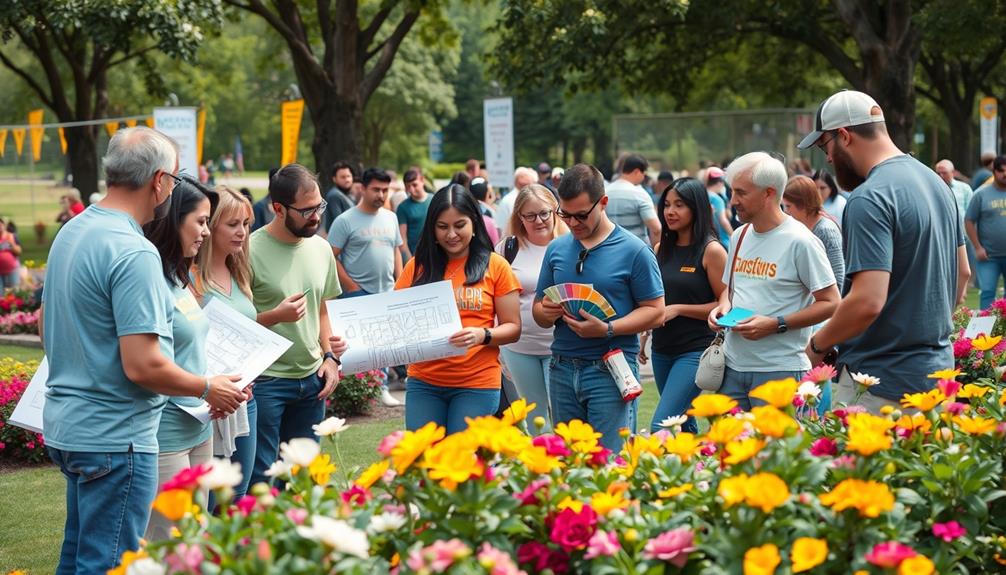
Finding community support opportunities can be a game-changer for your bathroom remodel. If you're a low-income homeowner, several resources are available to help you transform your space without breaking the bank.
For instance, you might consider reaching out to local animal care organizations, as they sometimes offer workshops on home improvement skills that can be beneficial in your remodeling efforts a place for animals.
Here's a list of options to explore:
- Local Non-Profit Organizations: Organizations like Rebuilding Together offer free home improvement assistance specifically for low-income families.
- Volunteer Programs: Many communities have skilled tradespeople who donate their time for home renovations, including bathroom remodels.
- Government Grant Programs: Look into local government initiatives that provide grants for home repairs, especially for low-income residents and seniors.
- Faith-Based Initiatives: Churches and other faith organizations often run programs that offer free or low-cost home improvement services.
- Community Workshops: Attend local resource fairs to connect with charities that provide financial assistance or materials for remodeling projects.
Frequently Asked Questions
Does Social Security Pay for a Bathroom Remodel?
Social Security doesn't pay for bathroom remodels since it covers basic living expenses. However, you might find assistance through Medicaid or local programs that help with necessary home modifications, especially if you qualify for additional support.
Do I Need a Permit to Remodel My Bathroom in Texas?
Yes, you'll likely need a permit to remodel your bathroom in Texas, especially for structural, electrical, or plumbing changes. Check with your local building department to confirm specific requirements and avoid potential fines or complications.
Are 1 Day Bathroom Remodels Worth It?
Think of a one-day bathroom remodel like a rejuvenating splash of water; it revitalizes your space quickly. If you value efficiency and aesthetic upgrades without hassle, these remodels are definitely worth considering for your home.
How Do You Renovate an Old Bathroom on a Budget?
To renovate an old bathroom on a budget, focus on DIY projects like painting, updating fixtures, and using recycled materials. Prioritize functional upgrades and look for local grants or incentives to help with costs.
Conclusion
By exploring government assistance programs, tapping into financial aid for home modifications, and leveraging energy efficiency incentives, you can transform your bathroom without breaking the bank. Seek out veteran resources, embrace cost-saving strategies, and connect with community support opportunities. Remember, you're not just remodeling; you're revitalizing your space, enhancing your comfort, and creating a safer environment. So, take action today, seize the resources available, and enjoy the benefits of a beautiful, upgraded bathroom—completely free!



